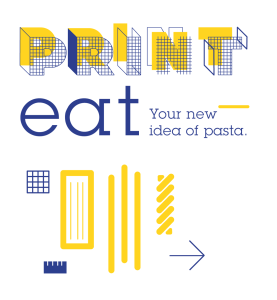In January, we reported news that leading pasta maker Barilla had teamed up with Dutch scientific research firm TNO to work on a custom 3D pasta printer, capable of printing 15-20 pieces of pasta every two minutes. The eventual idea would be for customers to head into a restaurant, possibly with their own pasta CAD files, and print them right at the table. There’s still no news about how that 3D printer is coming along since then, but the company is either moving forward at a steady pace or the company is super stoked on the prospect of 3D printed pasta because they’ve just launched a 3D design contest through Thingarage.

As far as the actual project requirements go, participants have 60 days to make some delicious designs that can be 3D printed with an FDM/FFF 3D printer in ABS and PLA. The models must be completely novel and cannot exceed 30mm x 30mm x 40mm in size. The designs will ultimately be judged on the following criteria: “Innovation, Creativity, On briefness, Technical Skills, and Presentation.” I’m not exactly sure what “on briefness” is, but, either way, I’m getting hungry.
First, second, and third place winners of the contest will be awarded €800 each. More importantly for the winner, the top prototype will be 3D printed by Barilla! This means that your CAD file could become one of the first commercially available 3D printed pasta designs. It’s times like these that I wish my mama had taught me to design 3D models, instead of how to make her delicious marinara sauce.


